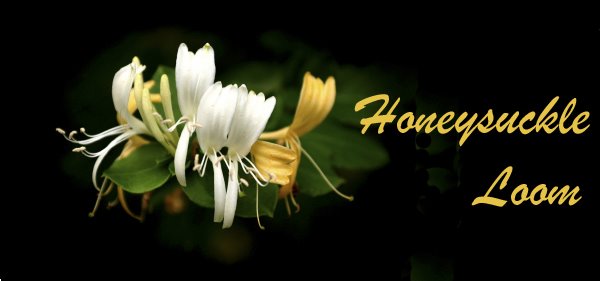 The weaving for my Lake Superior lap rug is complete and I love how it looks. I’m really looking forward to getting it off the loom and doing the wet finishing.
The weaving for my Lake Superior lap rug is complete and I love how it looks. I’m really looking forward to getting it off the loom and doing the wet finishing.The inspiration for this project came from our trip to Upper Michigan last summer.
 We visited Lake Superior, Lake Huron, Lake Michigan, Mackinac Island, Traverse City and Sault Ste. Marie. We did two lighthouse cruises and while out on Lake Superior I took some beautiful photos of the water.
We visited Lake Superior, Lake Huron, Lake Michigan, Mackinac Island, Traverse City and Sault Ste. Marie. We did two lighthouse cruises and while out on Lake Superior I took some beautiful photos of the water. Those water photos were my inspiration. Since my abilities to dye yarn pretty much suck, I sent my favorite Lake Superior water photo to Lisa Souza and said “what do you think?” A few weeks later, she sent me this close up photo. The colorway that she created was just perfect for the look I wanted to create. The woman is just amazing! She told me that in her experimenting she also created two skeins that had some darker blue colors in them. So for the warp, I used those two skeins. The three skeins I used are pictured on the left. My favorite Lake Superior colorway is the one on her website. I want to use it again -- maybe scarves -- I have lots of friends who love blues!
Those water photos were my inspiration. Since my abilities to dye yarn pretty much suck, I sent my favorite Lake Superior water photo to Lisa Souza and said “what do you think?” A few weeks later, she sent me this close up photo. The colorway that she created was just perfect for the look I wanted to create. The woman is just amazing! She told me that in her experimenting she also created two skeins that had some darker blue colors in them. So for the warp, I used those two skeins. The three skeins I used are pictured on the left. My favorite Lake Superior colorway is the one on her website. I want to use it again -- maybe scarves -- I have lots of friends who love blues! 

For my weave structure I picked a regular 3:2:1:2 twill because I wanted to capture some of ripple movement of the water. The warp was 416 ends at 12 epi. I divided the warp skeins into 4 balls of yarn and wound the warp four threads at a time so that I could get a shimmery feel to the warp yarn colors. The warp length was 78 inches, with a planned final length of the lap rug at 48 inches. I used a floating selvage with two threads on each side.

This sock yarn doesn’t have any nylon in it, but it was still a little stretchy. I wasn’t as careful as I should have been when I was winding the warp and I think I stretched it somewhat on the warping board. Because of this, my shoestring problems described below and the fact it was sock yarn, it was a little tricky getting the tension on the front apron correct.
I have been tying on with shoestrings lately and I had to buy more for this project. My local dollar store was out and after going to a half dozen stores looking for flat shoestrings, I ended up at Wal-Mart. The shoestrings I got from there turned out to be very stretchy. So between the stretchiness of the sock yarn and the shoestrings, many bad words were heard in my studio!
But once I got the tension squared away, the weaving went quickly (most of the time). There was one morning when I had to “step away from the loom”! I just wasn’t getting a clean shed and the shuttle kept catching. However, after a nap, I went back the loom and didn’t have any problems.
I kept a copy of the photo by the loom and used it as a guide. I had some of the slightly darker warp yarn leftover (that should have been a clue about the winding of the warp as my calculations said I should have very little left). So in sections of the blanket I used two shuttles, alternating the colors on each pick. This let me have shots of dark blue colors – just like in the photo.
This was the first time that I used my temple. It was great! I liked it so much, I am thinking about getting a smaller one for my scarves.
So what did I learn from this project:
1) Think about what I’m doing when I wind the warp,
2) How to use a temple
3) And I improved my shuttle throwing!
Now I just need to finish winding the next warp so that I can tie it on. I’m going to tie on from the back of the loom this time (first time for this) so I can’t cut the lap rug off the loom until I finish tying on the new warp.






